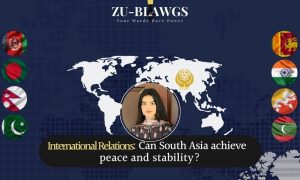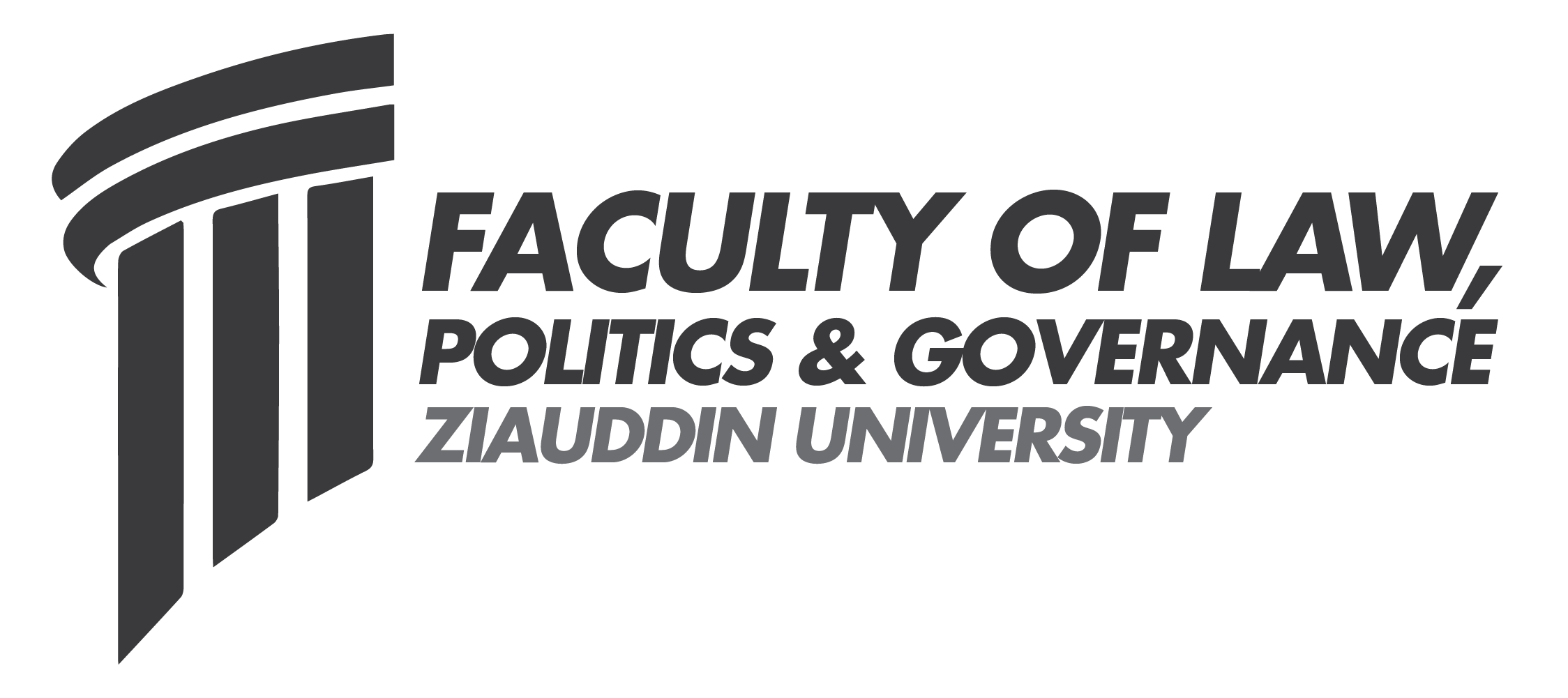South Asia can achieve peace and stability

Zaibunnisa Akram
This article intends to explore the solutions for peace and stability for post-colonial South Asia which is located in the southern region of Asia, consisting of eight different countries, including Afghanistan, Bangladesh, Bhutan, India, Maldives, Nepal, Pakistan, and Sri Lanka. South Asia today is facing numerous challenges that reduce the growth of these countries that are already in deep water. If we talk about India before the decline of the Mughal Empire, it was contributing 42% to the world’s GDP, but when Britishers left, it decreased to 3%, which was a big drawback. Britishers weakened the GDP to the point where it can never be revived. The World Bank states that South Asia is the world’s least integrated region today; however, South Asia can achieve peace and stability by integrating the part as a powerful block and ending all the borderless problems. This article will discuss South Asia’s challenges and crisis and how to bring an end to these problems, which mainly depends on the collective effort of these countries by reviving SAARC and working together to achieve mutual gains.
South Asia can achieve peace and stability by integrating the region as a powerful block and ending all the borderless problems. If we see the roots back to historic South Asia, a hub of trade, everyone wanted to come and invest in this land of opportunity, such as the Kushans. Aryans, Greek Bactrians, Alexander, and the great Britishers played the leading part in deteriorating south Asia by exploiting South Asia’s rich resources and military. After world war II, When Britishers broke their promises of giving Self government to Indians and instead imposed brutal laws, it leads to the rise of nationalism that can be observed as regional disintegration and when the Britishers were bankrupt and could not afford to stay long in India, they decided to do a hurried partition that was also poorly practised. They left India with various unsolved problems, including Water distribution, transfer of power, and funds distribution, even thousands of refugees while crossing boundaries died at the border of Pakistan; if the partition would have been performed correctly and divided everything equally between the two nuclear states, today Pakistan and India would not have been at loggers head fighting over Kashmir’s issue that is the main issue connects to all problems in countries of south Asia. It is the primary issue that holds the key to stability in South Asia that doesn’t allow Pakistan and India to sit together on the same table. Even the UN Tried to bury the hatchet of these two states and maintain peace but failed to do so.
Kashmir’s issue is the main issue connects to all problems in countries of south Asia that doesn’t allow Pakistan and India to sit together on the same table. Even the UN Tried to bury the hatchet of these two states and maintain peace but failed to do so.
Today, South Asia is facing many problems, including borderless challenges that need to be solved before it ultimately erodes the countries of South Asia. Issues like poverty disturb the whole system by inducing political and economic turmoil as poverty, and the economy go hand in hand. If we discuss South Asia’s trade potential, currently it is around 67 billion, almost three times the current rate of about 23 billion.[1] If we pay proper attention to our education system to educate the public that can raise employment rates, it will curtail poverty in South Asia and increase the GDP, which can then be spent appropriately on the resources. if we talk about pandemic Coronavirus it is important to shut down everything and impose stringent lockdown. However, South Asian countries are not able to afford this as if they would impose lockdown people will die because of the food scarcity as shutting down will snatch more people’s income. Daily wage workers are affected more. They will not be able to buy even the basic necessities of life; it will just make people’s lives more miserable in this depressing time of pandemic.
Economic Turmoil is another big issue, The WHO has officially started that South Asia has now gone into a global recession. Coronavirus has not just affected South Asia but the whole world all the developed countries like the UK’s and America’s economy is affected but due to south Asia being poorer regions have difficulties encountering problems like coronavirus. Shutting down the business has lessened the economy of the countries which were already dwindling. WHO stated that south Asia will suffer the most during these borderless problems because of its economic instability.
In South Asia, Climate change is another big borderless issue as it is the third most climate stressed region and a water-stressed region. If we pay attention specifically to Pakistan, the UN said if there is no action taken in 2025, Pakistan will dry up. Climate change is essential to control. The government of Pakistan should introduce a law that should lower the duty tax to import electric vehicles abroad and, if manufactured locally, should reduce taxes that will eventually lower the prices of electric vehicles, that will attract buyers in south Asia to buy these vehicles, and overtime majority of the vehicles that are being run on fuel will be replaced with the electric vehicle, this change will help Pakistan reduce the consumption of fuel, with less consumption of the energy the air pollution will decrease drastically and also will help Pakistan economically as the nation will need less energy then they will buy less fuel. Moreover, to tackle water problems, South Asia should store and save the water and aware the people to less consume the water.
According to the constructive debate, we can revive the position of these developing countries back into the way it was seen as a bright land of opportunity. Putting an end to all these problems in south Asia can change the situation and can bring peace. Coronavirus is a wake-up call for the governments—a high alert for regional cooperation.
To bring peace and stability in South Asia, This is the best time for regional collaboration by reviving South Asia Association Regional Cooperation (SAARC) that has been on a ventilator for many years.
South Asian countries should be reunited for mutual gains and work together for the greater good. Establishing economic dependency will also improve the relations of these countries and will make them able to stand on their actual trade potential. Countries like Pakistan and India are agricultural countries and rich in resources; thus, if they all are reunited for a collective interest, these countries can bring stability and thrive.
Moreover, the relationship between Pakistan and India can be solved by putting an end to the Kashmir issue, the bone of concession, which leads to many other problems. Constructivism debate states that if the wall of Berlin can fall, then the Kashmir issue can also be solved. The only good thing in this dark time of pandemic is a rebirth of SAARC; it has been revived because of the coronavirus where now all the south Asia countries are talking about confirmed cases and also helping each other by providing funds under SAARC CORONA EMERGENCY FUND hence, it can make these countries realise that short term collaboration can bring long term benefits. Rich countries like the Maldives, Bangladesh, Sri Lanka can help developing countries like Pakistan, India and can integrate South Asia.
According to the liberalism debate, refusal of power, politics is the only possible solution for international relations. Therefore if India stops trying to be a superpower country by dominating other countries in South Asia, it can then improve ties. If they all look for shared growth, thinking about their state and their regional states can lead to Stability by taking little steps that can bring significant differences. Let’s not forget that there was a time when South Asia was the hub of trade, and everyone wanted to come to South Asia.
Suppose these countries are united again and improve relations by solving problems like the Kashmir issue that is a territorial issue to today’s date.
For that reason, both countries, India and Pakistan spend a significant part of their budget on funding their defences to get stronger and stronger each day that causes significant damage to the nation within itself and in the region, continually disturbing the peace. If this problem is solved, it will be possible for countries to pay attention to other problems of the states except for the defence alone.
Express Tribune article, Facing pandemics in today’s world by Eric Shazar[2] also suggests that the future of global security lies in joint solutions. Borders should be forgotten to fight against disease, and during this pandemic, the entire globe needs to cooperate. For a secure future, combined solutions should be found. Pandemics and problems like it can be dealt with by sharing the information around the globe, and such epidemics occurred in 14th and 21st century as well, even before globalisation, so globalisation is not mainly the reason for the spread; however, organisations like the European Union, WHO and South Asian Association for regional cooperation should function effectively. They are reviving SAARC and regulating it like the EU Organization is the best example of regional cooperation where even passports are not needed to visit the regional country. Reviving SAARC and educating the masses with the current issues and solutions it can bring the differences with this enforcement of fundamental rights proper social order will help to face these challenges and bring peace and stability. In this ever-changing world, the one who can adopt technological progress can only survive. Government should form a perfect union securing the state’s best interest.
References:
[2] Shahzar, Eric. “Facing pandemics in today’s world.” [Karachi], 26 march 2020, https://tribune.com.pk/story/2184140/facing-pandemics-todays-world.
The writer is a Third-Year Law Student at ZFL
Email: [email protected]
Published in ZU-BLAWGS, September 20th, 2021
